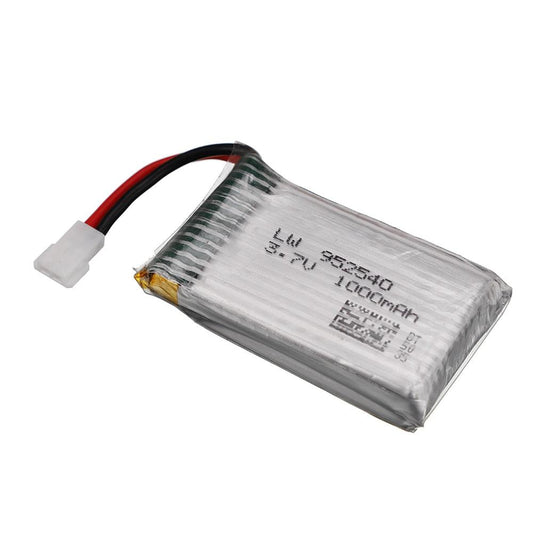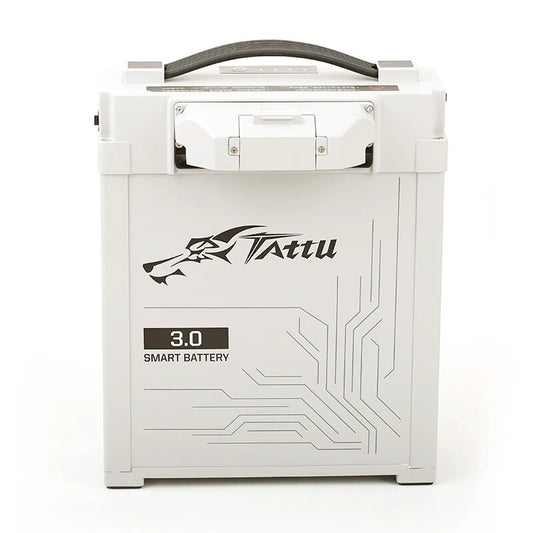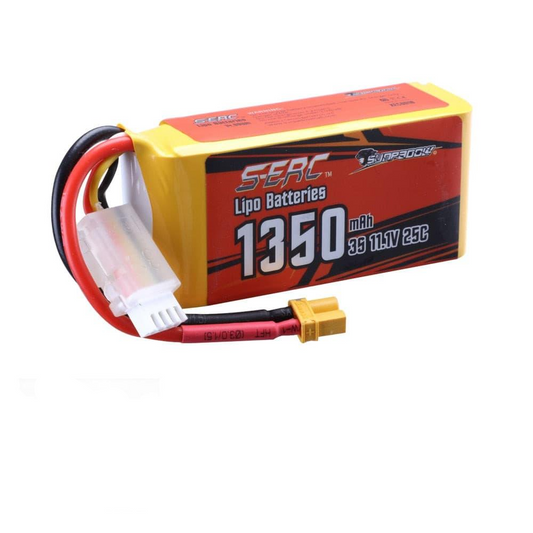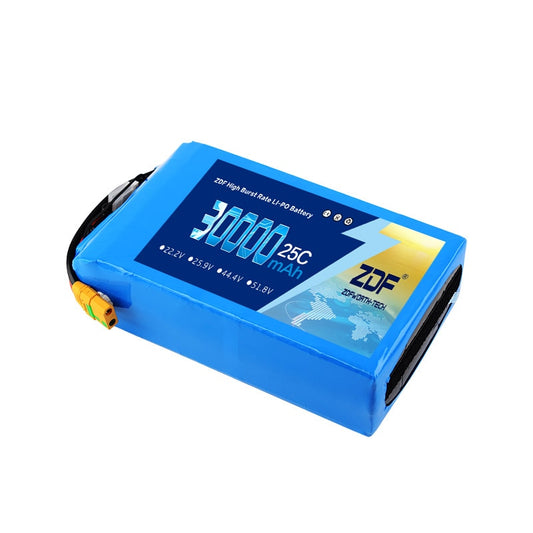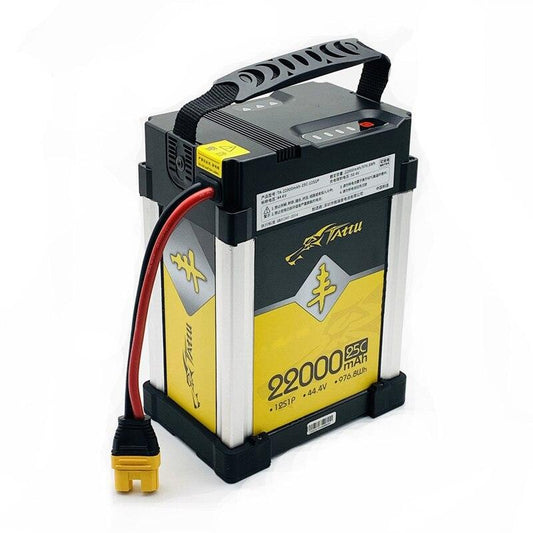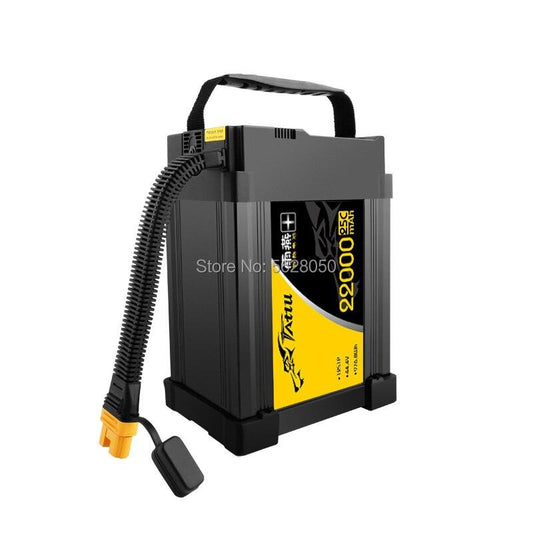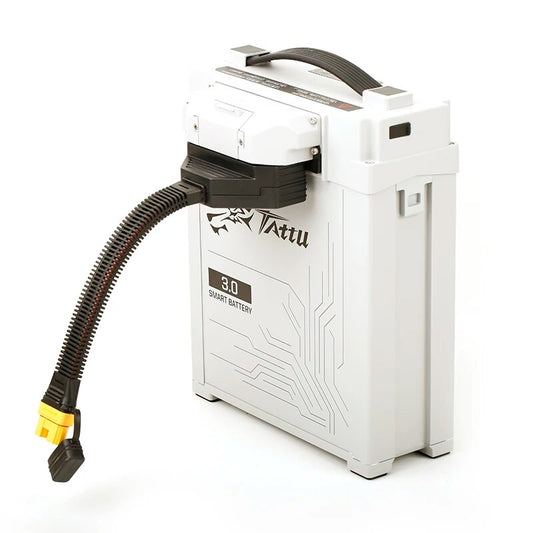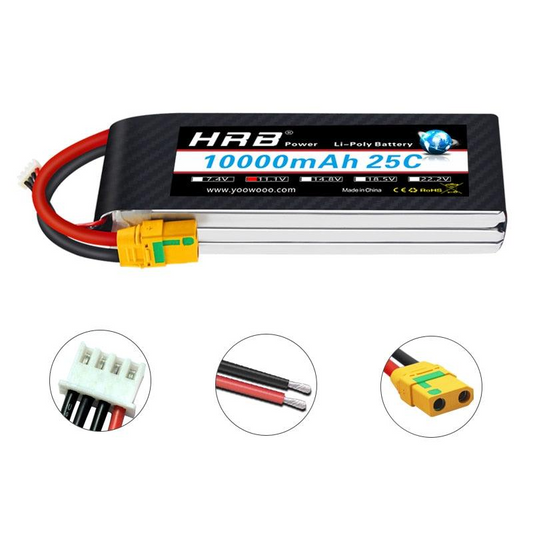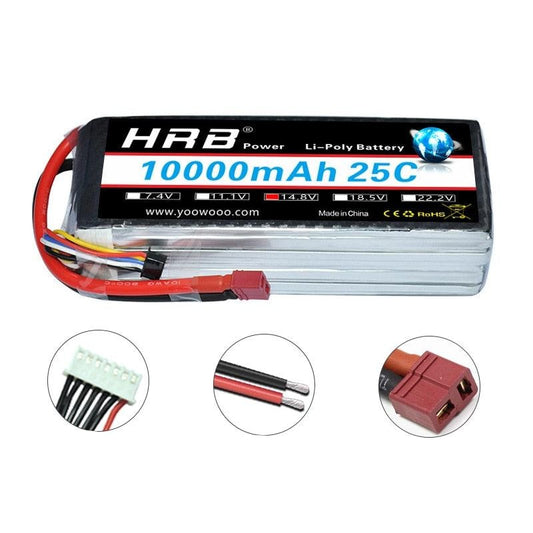-
Upgraded 3.7V 1000mAh 25C Lipo Battery 952540 For Syma X5 X5C X5C-1 X5S X5SW X5SC V931 H5C CX-30 CX-30W RC Quadcopter Parts
Regular price From $9.52 USDRegular priceUnit price per -
TATTU 22000mAh 22.2V 6S 488wh LiPO Battery Burst 25C for Big Load Multirotor FPV Drone Hexacopter Octocopter Agriculture Drone Battery
Regular price $338.75 USDRegular priceUnit price per -
Tattu G-Tech 6S 23000mAh 22.8V 25C Lipo Battery With XT90-S Plug For UAV
Regular price $599.00 USDRegular priceUnit price per -
Herewin 44.4V 12S 30000mAh 25C Pouch Pack LiPo Drone Battery
Regular price $550.00 USDRegular priceUnit price per -
drone battery hw752540p - 1S 3.7V 25C 700mAh Lipo Battery with Sima Plug
Regular price From $12.99 USDRegular priceUnit price per -
Tattu Plus 10000mAh 25C 22.2V 6S1P 6S FPV Lipo Battery With AS150 Connector Plug For RC Drone
Regular price $166.56 USDRegular priceUnit price per -
Tattu G-Tech 6S 11000mAh 22.8V 25C Lipo Battery With XT90-S /EC5 Plug For UAV
Regular price $266.00 USDRegular priceUnit price per -
NEW TATTU PRO 28000mah 3.0 58.8V 25C 14S intelligent battery lipo battery smart battery 3.0 Agriculture Drone Battery
Regular price $834.59 USDRegular priceUnit price per -
Sunpadow Lipo Battery 3S 11.1V 1100mAh 1350mAh 25C 35C JST XT30 Soft Pack for RC Airplane Quadcopter Helicopter Drone Boat FPV
Regular price From $23.47 USDRegular priceUnit price per -
DUPU 6S / 12S / 14S 22000mAh 25C LiPo Battery for Agricultural Drones With XT90 / AS150 Plug
Regular price From $369.00 USDRegular priceUnit price per -
Tattu Pro 14S HV 53.2V 22000mAh 25C Lipo Smart Battery for UAV Drone with AS150U-F Plug
Regular price $1,099.00 USDRegular priceUnit price per -
drone accessories 802540 battery - 3.7V 600mAh 25C Drone Battery
Regular price $10.50 USDRegular priceUnit price per -
ZDF Batteries 6S 7S 12S 14S 30000mAh 22.2V 25.9V 44.4V 51.8V 25C LiPo Battery Pack with XT90-S Plug Connector for UAV Drones
Regular price From $399.73 USDRegular priceUnit price per -
TATTU 44.4V 22000mAh 25C 12S Lithium Polymer Rechargeable Battery lipo battery for DIY RC Drone UAV model Agriculture Drone Battery
Regular price $512.65 USDRegular priceUnit price per -
TATTU 22000mAh 44.4V 12S LiPO Battery Burst 25C for Big Load Multirotor FPV Drone Hexacopter Octocopter Agriculture Drone Battery
Regular price $662.72 USDRegular priceUnit price per -
TATTU PRO 3.0 19000mAh 22000mah 25000mAh 28000mAh 25C 58.8V 14S Smart Battery Lipo Battery with AS150U plug for Drone Agriculture Drone Battery
Regular price From $59.57 USDRegular priceUnit price per -
HRB 3S 11.1V 10000mah Lipo Battery - 25C XT60 T EC2 EC3 EC5 XT90 XT30 for For RC Car Truck Monster Boat Drone RC Toy
Regular price $118.29 USDRegular priceUnit price per -
HRB 2S 3S 4S Lipo Battery - 10000mah 7.4V 11.1V 14.8V T Deans XT60 EC5 XT90 18.5V 22.2V 5S 6S 25C RC Helicopter Airplane Car Parts
Regular price From $50.14 USDRegular priceUnit price per -
MG UAV 16000mAh 25C 6S/12S/14S Solid State Lipo Battery for Large Load VTOL Fixed-Wing Fire-Fighting Drone
Regular price From $190.00 USDRegular priceUnit price per -
MG 22000mAh 6S/12S/14S 25C Solid State Lipo Battery 22.2V/44.4V/51.8V for Delivery, Aerial Photography Drones
Regular price From $253.00 USDRegular priceUnit price per -
MG UAV 44000mAh 25C 6S/12S/14S/18S Solid State Lipo Battery for Large Agricultural Spray Drones
Regular price From $1,001.00 USDRegular priceUnit price per -
TCB 2S/3S/4S/5S/6S 2200mAh 25C LiPo Battery with JST Balance Plug & Custom Discharge Connectors for RC Models
Regular price From $27.00 USDRegular priceUnit price per -
TCB 2S 3S 4S 5S 6S 7S 8S 8000mAh 25C LiPo Battery with XT60 Plug for RC Planes FPV Drones Helicopters Cars
Regular price From $65.00 USDRegular priceUnit price per -
TCB 2S 3S 4S 5S 6S 7S 8S 1500mAh 25C 45C 75C LiPo Battery with XT60 Plug for FPV Drones RC Planes Helicopters Cars
Regular price From $15.00 USDRegular priceUnit price per -
TCB 2S 3S 4S 5S 6S 7S 8S 1300mAh 25C LiPo Battery with XT60 Plug for RC Planes FPV Drones Helicopters Cars
Regular price From $15.00 USDRegular priceUnit price per -
TCB 2S 3S 4S 5S 6S 7S 8S 1800mAh 25C LiPo Battery for RC Planes FPV Drones Helicopters Cars with XT60 and Custom Plugs
Regular price From $18.00 USDRegular priceUnit price per -
TCB 2S 3S 4S 5S 6S 7S 8S 1100mAh 25C LiPo Battery with XT60 Plug for RC Planes FPV Drones Helicopters Cars
Regular price From $15.00 USDRegular priceUnit price per -
DUPU 6S / 12S / 14S 16800mAh 25C LiPo Battery for Industrial UAV , Agriculture Drones
Regular price From $299.00 USDRegular priceUnit price per -
DUPU 12000mAh 4S/6S 25C High Discharge Drone LiPo Battery – XT60 / XT90 Plug Options
Regular price From $139.00 USDRegular priceUnit price per -
DUPU 8000mAh 3S/4S/6S High Discharge LiPo Drone Battery – 25C / 60C / 85C – XT60/XT90
Regular price From $89.00 USDRegular priceUnit price per -
DUPU 3S / 4S / 6S 10000mAh 25C Drone LiPo Battery - XT60 / XT90 / AS150 Plug Options
Regular price From $139.00 USDRegular priceUnit price per -
Tattu 22000mAh 45.6V 25C 12S1P HV High Voltage Lipo Battery Pack with AS150-F
Regular price $929.00 USDRegular priceUnit price per -
Tattu Pro 45.6V 12S HV 22000mAh 25C Lipo Smart Battery Pack with AS150U-F Plug for UAV Drone
Regular price $1,059.00 USDRegular priceUnit price per -
TATTU 4.0 HV 53.2V 14S 30000mAh 25C Smart LiPo Battery for Agriculture Drones
Regular price $1,299.00 USDRegular priceUnit price per -
TATTU 4.0 HV 53.2V 14S 20000mAh 25C Smart Lipo Battery for UAV Agriculture Drones
Regular price $878.00 USDRegular priceUnit price per -
Herewin 22.2V 6S 30000mAh 25C Drone Battery
Regular price $699.00 USDRegular priceUnit price per
